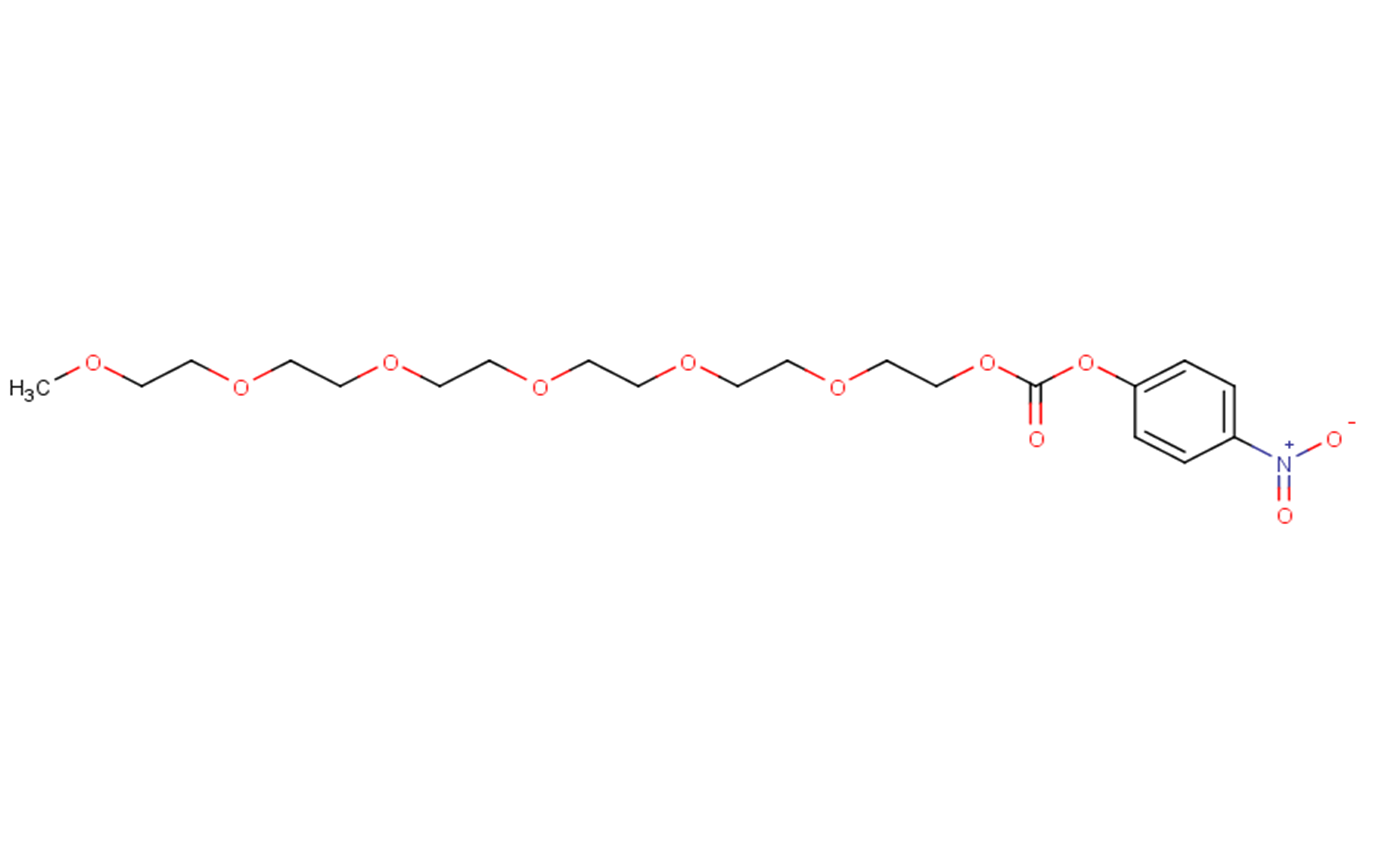
m-PEG7-4-nitrophenyl carbonate
CAS No. 678150-56-6
m-PEG7-4-nitrophenyl carbonate( —— )
Catalog No. M24690 CAS No. 678150-56-6
m-PEG7-4-nitrophenyl carbonate is a PEG-based PROTAC linker that can be used in the synthesis of PROTACs.
Purity : >98% (HPLC)
 COA
COA
 Datasheet
Datasheet
 HNMR
HNMR
 HPLC
HPLC
 MSDS
MSDS
 Handing Instructions
Handing Instructions
| Size | Price / USD | Stock | Quantity |
| 2MG | 83 | In Stock |


|
| 5MG | 125 | In Stock |


|
| 10MG | 185 | In Stock |


|
| 25MG | 277 | In Stock |


|
| 50MG | 422 | In Stock |


|
| 100MG | Get Quote | In Stock |


|
| 200MG | Get Quote | In Stock |


|
| 500MG | Get Quote | In Stock |


|
| 1G | Get Quote | In Stock |


|
Biological Information
-
Product Namem-PEG7-4-nitrophenyl carbonate
-
NoteResearch use only, not for human use.
-
Brief Descriptionm-PEG7-4-nitrophenyl carbonate is a PEG-based PROTAC linker that can be used in the synthesis of PROTACs.
-
Descriptionm-PEG7-4-nitrophenyl carbonate is a PEG-based PROTAC linker that can be used in the synthesis of PROTACs.
-
In VitroPROTACs contain two different ligands connected by a linker; one is a ligand for an E3 ubiquitin ligase and the other is for the target protein. PROTACs exploit the intracellular ubiquitin-proteasome system to selectively degrade target proteins.
-
In Vivo——
-
Synonyms——
-
PathwayPROTACs
-
TargetPROTAC
-
RecptorPEGs|Alkyl/ether
-
Research Area——
-
Indication——
Chemical Information
-
CAS Number678150-56-6
-
Formula Weight461.46
-
Molecular FormulaC20H31NO11
-
Purity>98% (HPLC)
-
SolubilityDMSO:10 mM
-
SMILESCOCCOCCOCCOCCOCCOCCOC(OC1=CC=C([N+]([O-])=O)C=C1)=O
-
Chemical Name——
Shipping & Storage Information
-
Storage(-20℃)
-
ShippingWith Ice Pack
-
Stability≥ 2 years
Reference
1.An S, et al. Small-molecule PROTACs: An emerging and promising approach for the development of targeted therapy drugs. EBioMedicine. 2018 Oct;36:553-562
molnova catalog



related products
-
BTK PROTAC 10
BTK PROTAC 10 is a novel potent PROTAC for BTK with DC50 of 1.1 nM in cultured Ramos cells.
-
Propargyl-PEG3-amine
Propargyl-PEG3-amine (Propargyl-PEG3-NH2) is a PROTAC linker belonging to the PEG class and can be used to synthesize PROTAC molecules.
-
Fmoc-Val-Cit-PAB-MMA...
Fmoc-Val-Cit-PAB-MMAE consists the ADCs linker (Fmoc-Val-Cit-PAB) and potent tubulin inhibitor (MMAE). Fmoc-Val-Cit-PAB-MMAE is a drug-linker conjugate for ADC.



 Cart
Cart
 sales@molnova.com
sales@molnova.com


